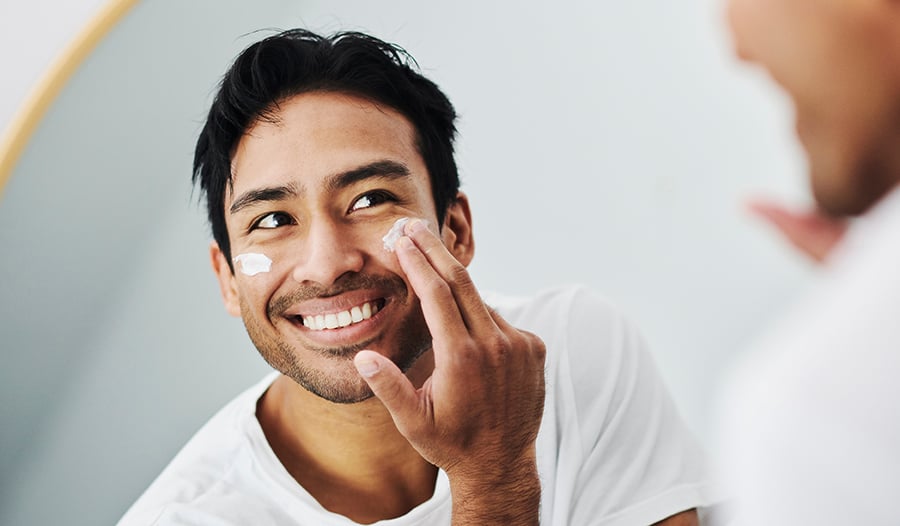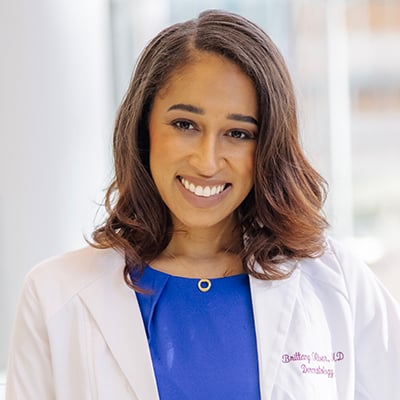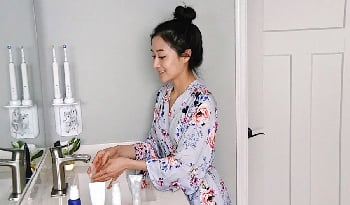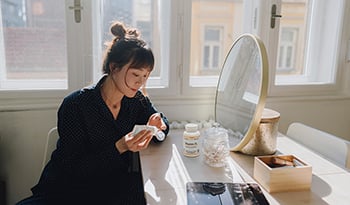Benzoyl Peroxide: A Dermatologist's Guide to its Benefits for Skin and More
DISCLAIMER:This blog does not intend to provide diagnosis...
- In this article:
- What Is Benzoyl Peroxide?
- What Are the Benefits of Benzoyl Peroxide?
- Are There Side Effects When Using Benzoyl Peroxide?
- Ways to Utilize Benzoyl Peroxide in Your Skincare Regimen
- Takeaway

If you’ve ever wandered the skincare aisle at your local drugstore, chances are you’ve encountered the acne section. If you’re like me and have acne-prone skin, you’ve intentionally sought out this corner of the store desperately trying to find a remedy for stubborn breakouts. No one gets through life without being burned by the unfortunate appearance of a pimple at least once—and we all know they tend to show up at the worst possible times—but some of us deal with breakouts more regularly.
Acne is a common skin disease caused by a combination of three main factors:
- inflammation caused by a bacteria known as Cutibacterium acnes (C. acnes)
- clogged pores
- hormone-mediated sebum (oil) production
While it most often affects adolescents, acne is not uncommon in adults and is also seen in children. An estimated 50 million people in the United States suffer from acne.
There are many ways to treat acne, depending on its severity. Mild acne may simply require a store-bought medicated cleanser, while more severe cases often warrant a trip to the dermatologist for prescription medications. I see the entire spectrum of acne in my practice as a board-certified dermatologist, and I consistently recommend benzoyl peroxide as one of the most effective acne-fighting ingredients.
In this article, I’m taking you on a deep dive into benzoyl peroxide—how it works, its potential benefits, and tips on incorporating it into your skincare regimen. You may be surprised by the many ways it can be utilized beyond the acne sphere!
What Is Benzoyl Peroxide?
Benzoyl peroxide is a well-known, FDA-approved topical antibacterial treatment for mild to moderate acne. It is available over the counter (no prescription required!) and is one of the most accessible and affordable ingredients for treating acne. It comes in various concentrations ranging from 2.5% up to 10% and can be found formulated as a gel, cream, lotion, foam, solution, cleansing bar, or wash.
Topical benzoyl peroxide exhibits antibacterial effects against C. acnes, a key bacteria implicated in the pathogenesis of acne that lives on the skin and within hair follicles. It can be used alone but works best in combination with other acne treatments, like topical antibiotics and topical retinoids.
What Are the Benefits of Benzoyl Peroxide?
Benzoyl peroxide offers many benefits for the skin but is best known for its acne-fighting properties. Once benzoyl peroxide is absorbed by the skin, it converts to benzoic acid, releasing reactive oxygen species—unstable oxygen-containing molecules that react easily with other cellular molecules—that break down the DNA and proteins of acne-causing bacteria.
Not only does benzoyl peroxide kill C. acnes bacteria, but it also helps clear out pores by removing excess oil and dead skin cells. The reduction of acne-causing bacteria and excess oils results in visible improvement of acne.
In addition to being highly effective for mild to moderate acne, benzoyl peroxide is helpful for several other common skin conditions:
- Bye-bye body odor: Benzoyl peroxide helps reduce body odor by killing bacteria that reside in the sweatier parts of our bodies—think armpits and groin.
- Relieves rosacea symptoms: Got rosacea? Give benzoyl peroxide a try! It has been proven to decrease the redness and pesky pimples that are the hallmarks of inflammatory rosacea.
- Reduces razor burn and other skin bumps: Struggle with facial razor bumps, also known as pseudofolliculitis barbae? You may be prone to folliculitis, a condition in which hair follicles on any part of the body become infected with bacteria and become inflamed, producing pustules and pink bumps. You guessed it—benzoyl peroxide can help with these conditions, too.
As a bonus, bacterial drug resistance has never been reported with benzoyl peroxide, unlike topical prescription antibiotics commonly used to treat the above conditions.
Are There Side Effects When Using Benzoyl Peroxide?
The most common side effect of benzoyl peroxide is the bleaching of colored fabrics. A helpful pro-tip for the benzoyl peroxide newbie: after washing your face or body with benzoyl peroxide, pat dry with a white towel to ensure no unsightly stains are left behind.
Like with most active ingredients in skincare, there is a potential risk of local irritation, especially if you use multiple actives in your skincare regimen. Mild dryness and redness may develop when using higher concentrations of benzoyl peroxide and should not be a cause for concern—these symptoms are common and can be successfully managed by decreasing the frequency of use or following it up with a moisturizer to hydrate the skin.
You could also try a product containing micronized benzoyl peroxide to reduce irritation. These products contain smaller particles that are more bioavailable to the skin, resulting in more effective skin penetration.
Benzoyl peroxide can interact with certain topical retinoids when the two ingredients are applied at the same time, decreasing the activity of the retinoid and essentially canceling its benefits. A simple way to get around this is by applying benzoyl peroxide in the morning and your retinoid in the evening.
Be sure to wear sunscreen with daytime application of benzoyl peroxide, as it can make the skin more sensitive to the sun.
Ways to Utilize Benzoyl Peroxide in Your Skincare Regimen
Now that you understand the benefits of benzoyl peroxide, it’s time to navigate the ways it can be incorporated into your skincare regimen.
Let’s start by setting some expectations. It can take up to 8 to 12 weeks of consistent benzoyl peroxide use to see visible improvements in acne breakouts. It’s also important to note that combatting acne with a preventative strategy is the most effective.
Once your skin starts to clear up, fight the urge to return to your old ways—you’ll need to continue using a benzoyl peroxide product to maintain your results. Using a gel or cream cleanser or a facial cleansing bar once or twice daily is a great way to start. Stick to 4% to 5% on the face to avoid potential dryness and irritation, especially if you are just starting out.
Below I list my top benzoyl peroxide product recommendations for a variety of uses and areas of the body.
Top Benzoyl Peroxide Cleansers for the Face
- Cetaphil Gentle Clear Complexion-Clearing BPO Acne Cleanser
- Differin Daily Deep Cleanser for Sensitive Skin
- PanOxyl Acne Creamy Wash with Benzoyl Peroxide 4% Daily Control
Top Benzoyl Peroxide Washes for the Body
If you’ve got truncal acne—or “bacne” as it is not so affectionately called—reach for a 10% strength cleanser. The skin on your chest and back is less sensitive than on the face and can tolerate a stronger product in most individuals. Here are my top two benzoyl peroxide washes for the body:
- PanOxyl Acne Foaming Wash 10% Benzoyl Peroxide Maximum Strength
- Oxy Skin Care Soothing Cream Acne Cleanser with Prebiotics Maximum Strength
Top Spot-treating Creams and Gels
If a few surprise zits suddenly pop up, you can also use benzoyl peroxide as a spot treatment on the fly. For this purpose, I recommend a high-concentration spot-treating cream or gel that can help clear individual pimples faster:
- Neutrogena Rapid Clear Stubborn Acne Spot Gel Maximum Strength
- Clean & Clear, Persa-Gel 10, Maximum Strength, 1 oz (28 g)
- Oxy Skin Care Advanced Care Rapid Spot Treatment with Prebiotics Maximum Strength
Top Spot Treatments for Sensitive Skin
If your skin is on the sensitive side, you can still reap the benefits of a spot treatment—but you may need to dial back on the concentration you use. For this situation, I recommend something a little less potent that is still clinically proven to be tough on acne, such as this 2.5% spot treatment by Neutrogena:
Best Full-face Treatment for All Day
For a leave-on, full-face treatment you can wear all day that will reduce acne with less irritation, consider a product containing micronized benzoyl peroxide:
Takeaway
Benzoyl peroxide is an acne workhorse and for good reason. Its affordability, accessibility, and favorable side effect profile mean most people can incorporate it into their skincare regimen safely and effectively. Stick to the above tips and tricks for optimal results with few, if any, side effects.
Whether you aim to fight acne, body odor, folliculitis, or any number of conditions benzoyl peroxide has proven useful for, benzoyl peroxide can help! If you continue to struggle, enlist the help of a dermatologist for additional guidance in reaching your skincare goals.
References:
- Carley, AC, Stratman, EJ, Lesher, JL Jr, McConnell, RC. “Antimicrobial Drugs.” Dermatology. 4th ed, 2017. Elsevier. 2215-2241.
- Eady EA, Bojar RA, Jones CE, et al. The effects of acne treatment with a combination of benzoyl peroxide and erythromycin on skin carriage of erythromycin-resistant propionibacteria. Br J Dermatol. 1996;134:107–113.
- Matin T, Goodman MB. Benzoyl Peroxide. In: StatPearls. Treasure Island (FL): StatPearls Publishing; October 10, 2022.
- Zaenglein AL, Pathy AL, Schlosser BJ, et al. Guidelines of care for the management of acne vulgaris, J Am Acad Dermatol. 2016; 74(5): 945-973.

 By Dr. Brittany Oliver, M.D., F.A.A.D.
By Dr. Brittany Oliver, M.D., F.A.A.D.


